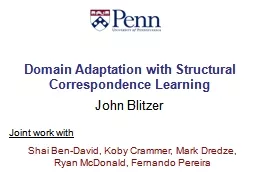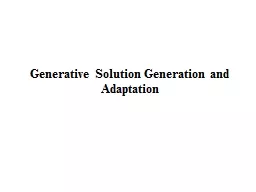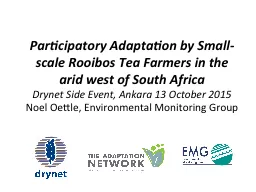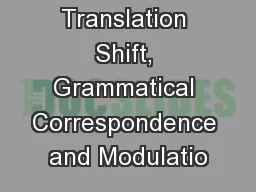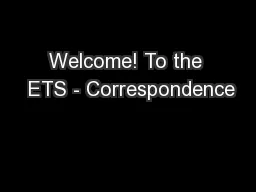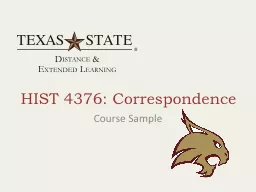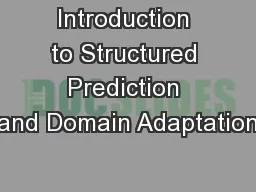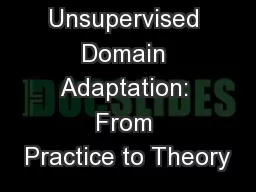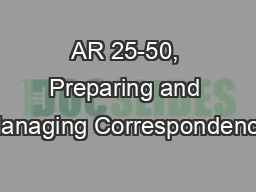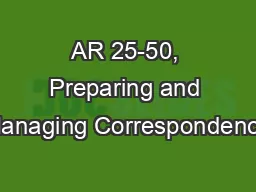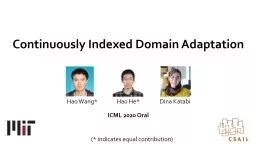PPT-Domain Adaptation with Structural Correspondence Learning
Author : yoshiko-marsland | Published Date : 2016-05-06
John Blitzer Shai BenDavid Koby Crammer Mark Dredze Ryan McDonald Fernando Pereira Joint work with Statistical models multiple domains Different Domains of Text
Presentation Embed Code
Download Presentation
Download Presentation The PPT/PDF document "Domain Adaptation with Structural Corres..." is the property of its rightful owner. Permission is granted to download and print the materials on this website for personal, non-commercial use only, and to display it on your personal computer provided you do not modify the materials and that you retain all copyright notices contained in the materials. By downloading content from our website, you accept the terms of this agreement.
Domain Adaptation with Structural Correspondence Learning: Transcript
Download Rules Of Document
"Domain Adaptation with Structural Correspondence Learning"The content belongs to its owner. You may download and print it for personal use, without modification, and keep all copyright notices. By downloading, you agree to these terms.
Related Documents

